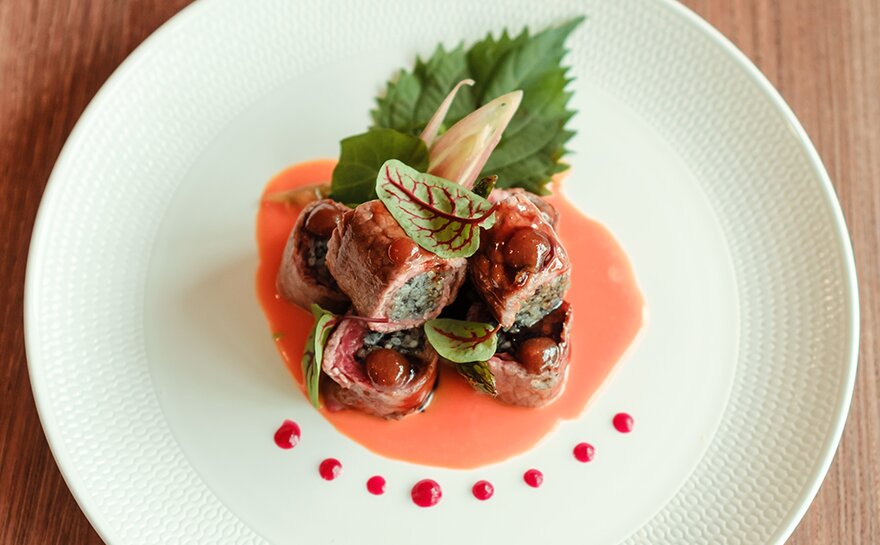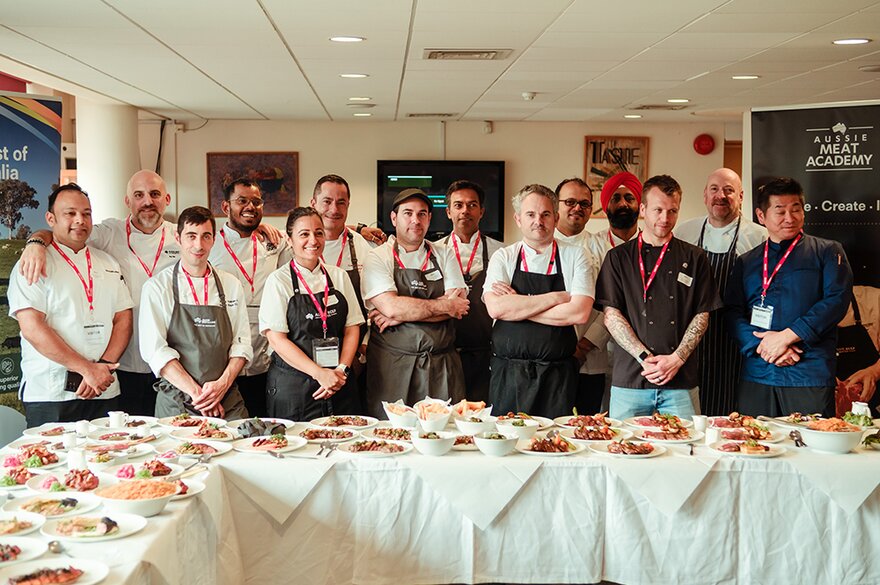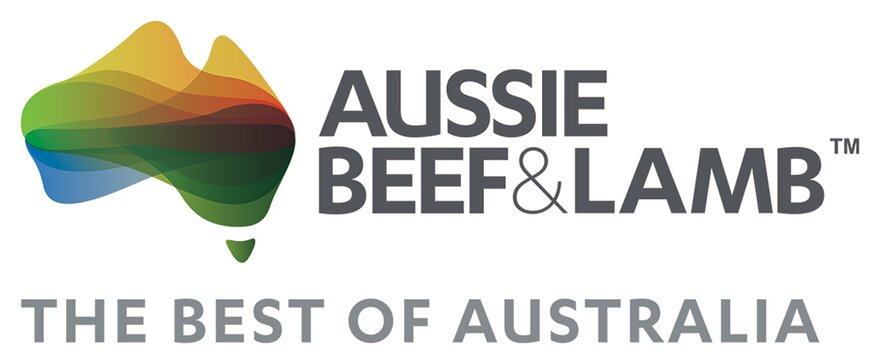A quality grading system ensures that chefs know what they are getting when they cook Australian beef and lamb, with the best being a match for any quality import
Francisco Martinez smiles as he recalls the first time he saw how cattle is raised in Tasmania. "It's amazing," says Martinez, executive chef at South American restaurant group Fazenda. "They've got the cattle, a mix of Black Angus and Hereford, on the beach, they're roaming in and out of the water. It's a paradise. And you can taste it, too – there's a saltiness to the beef."
For UK-based chefs like Martinez, the easy availability of high-quality Australian beef and lamb is a huge boon, notwithstanding the minor furore when the UK-Australia Free Trade Agreement came into effect earlier this year. Some British farmers feared the gradual removal of tariffs on Aussie meat meant the market was about to be swamped; others fretted that imported Aussie meat wouldn't be raised to the same welfare and regulatory standards as British animals.
Aussie Beef & Lamb representative Stephen Edwards is keen to allay those fears. Speaking at a menu development day at West London College in October, which saw top chefs paired with the college's hospitality students to prepare dishes using Australian beef and lamb, he said the imported meat would meet the standards British consumers expect in terms of how it was produced and tastes.
"This is a story about Aussie meat that hasn't been told yet," he says. Australian farmers invest more than $13m (£6.8m) a year in research and development projects aimed at reducing the industry's environmental impact, for example. "We're here to tell our story about sustainability," he says. "We're working towards carbon neutrality by 2030, on farms and in processing as well."
The Free Trade agreement also stipulates that hormone-treated beef remains banned in the UK, which was one of the major fears about imported Australian meat. "Every ounce of beef that comes into the UK is guaranteed HGP-free [meaning that it hasn't been treated with hormones to stimulate growth]," says Edwards. "Along with the UK, we have the highest animal welfare standards in the world."
The beef is raised on Australia's eastern seaboard and in the south, while lamb is mainly from the lush pastures in the south of the country. "Our products are fantastic quality," he adds. "The majority of what's coming over is grain-fed beef and pasture-raised lamb. We're offering amazing products all the way through to wagyu; we have the second largest wagyu herd after Japan."
Next level flavour
A variety of cuts were on display at the West London College event, from lamb rack to bavette. Chefs including Shantibhushan Lal, executive chef at Brigadiers in London, David Lagonell of Shoreditch's Temper and Roy Ner of Jeru in Mayfair spent the morning showing students what could be done with Aussie meat.
For Ner, it was a reminder of his home from home: the chef spent the best part of 25 years working in Sydney before coming to London in 2021. He's an ambassador for Aussie beef, a reflection of the passion he has for the product. "From grass-fed to grain-fed, Aussie beef is on another level," he says. "It's all government-regulated, everything is audited."
He points to the detailed labelling that the best Aussie beef gets as part of the Meat Standards Australia (MSA) grading system. Consumer taste panels assess each cut and divide them into three levels of eating quality: MSA three star (MSA graded), four star (premium quality) and five star (supreme quality), as well as offering recommended cooking techniques, from roast to shabu shabu – a Japanese meat hot pot. All this information is accessible through a barcode, he says.
"It will tell you that 100 people sampled this beef and what they think before you even start cooking," Ner says. "If you cook it shabu shabu, this is how it will taste, graded from three to five; if you grill it, here's the flavour from three to five; if you steam it, poach it, it's the same. It's unheard of. The starting point in terms of quality is so much higher."
Australia has developed a series of processes and checks that ensure its meat is as reliably high-quality as any in the world, according to Edwards. "The meat goes through very stringent quality checks," he says. "Not only in terms of MSA, but all of our carcasses are graded through breed, through quality and through physiological age, which is about how the animal has lived its life and grown to maturity.
"We're very strict on making sure the eating quality is right. Plus, our beef has 120 days' shelf life – and nothing has been done to it other than hygienic conditions and quality control – while the lamb gets 90 days. This is world-leading quality control."
The size and relative emptiness of Australia make it the perfect place to raise cattle, Ner adds. "You've got a continent the size of Europe, with just 26 million people," he says. "We've got a lot of natural resources, a lot of land, huge areas of pristine, lush green pastures the size of the UK, a lot of opportunities. This is the wealth of Australia – that space."
'I've been using Aussie lamb for a long time'
Martinez, who cut his teeth working at El Bulli in Spain, is Aussie Beef and Lamb's ‘Lambassador'. Fazenda, which comprises six restaurants around the UK, uses 75 tonnes of meat a month, he says, around 20 tonnes of which is lamb. "We are big, big players in this world," he says. "I've been using Aussie lamb for a long time, and I was already an unofficial ambassador because of that."
He says that they try to source products from the UK but that it's impossible to ensure supply of enough British lamb year-round. "We had to find an alternative that is the quality we need, the consistency too, because we have expansion plans," he adds.
"Once you are working with a specific brand to your specifications, every single box you open is the same consistency, it's really top-level. There's a lot of uncertainty in running restaurants so having something like this you can rely on is great." Fazenda uses legs, chumps and racks, "the cuts that the customer is looking for when they go out," he says. "We don't marinate, we just grill and sell."
Martinez has also begun to use Australian beef in addition to the beef he sources in Scotland and Ireland, which makes up a large chunk of the 47 tonnes a month consumed in his restaurants. He's working with a farm in Australia to produce wagyu beef to replace some Japanese wagyu which became too expensive to justify. "People don't want to pay £120 for 200 grams of steak," he says.
Few people in the UK know more about wagyu than Japanese chef Saito Daikichi, once of Tokyo Sukiyaki Tei in Chelsea but now a consultant here and overseas. He agrees with Martinez on the quality of Australian wagyu: "When I first tasted it I was surprised because the flavour is very close to Japanese beef," he says. "It's really tender, but maybe more people will like this [compared to Japanese beef] because it's not too fatty. You can't stop eating it – I ate 500 grams when I first tried it!"
One of the key strengths of Australian meat, Edwards says, is how versatile it is. "That's really important. You can use it for a variety of different cooking methods, different styles, and we do sell the product to most major markets, where the cuts get used in many different ways."
That's something that Ner knows all about, having earned his spurs in Sydney's diverse restaurant scene. "One of my favourite cuts is chuck, and that's because of the Korean influence on Sydney cooking," he says. "So what they do is they chill it, they cut it like sashimi, and then you either flash fry it or you shabu-shabu it – cut it super thin and drop it into ramen or soup. Chuck usually costs less, and people don't put it on the menu, but you can make an absolutely amazing dish."
In the end, there's only one way for chefs to establish if Aussie meat is the right thing for them. "Try it, taste it, see how it works for you," says Edwards. "It's very consistent – the distributors I work with here in the UK [are] saying you can always count on Australian beef; you open a box of sirloins and they'll be the same size, the same colour, the same quality. You can rely on it."
How much Aussie meat is coming to the UK?
Although the amount of beef and lamb coming in initially is quite modest, there is scope for it to grow, and steeply. The deal allows 35,000 tonnes of beef to be imported tariff-free in the first year, rising to 170,000 tonnes in year 15. For lamb, 25,000 tonnes can be imported tariff-free in the first year, rising to 125,000 tonnes in year 15. There will be no tariffs on Aussie beef or lamb from year 16. However, these figures will take many years to achieve.
We're nowhere near that at the moment. In the last year before the deal came into effect, Britain imported around 2,500 to 3,000 tonnes of Aussie beef, while about 1,200 tonnes of beef and 4,200 tonnes of sheep meat has arrived since the Free Trade Agreement came into force on 1 June.
Some British farmers are worried that this represents a threat, but Aussie Beef & Lamb representative Stephen Edwards is keen to play down that notion. He says that Aussie beef will aim to fill gaps in the British market rather than replace native products. "People think we're going to be flooding the market, but it's just not going to happen," he says.
"We've got huge markets in Japan, Korea, the US, China, and the Middle East. Britain produces a lot of grass-fed product, we're bringing in grain-fed product – so it really complements what British farmers are doing. It's a niche market for us. We're not going to be bringing in thousands and thousands of tonnes overnight."
Beef imports will focus on loin cuts such as sirloin, ribeye and tenderloin, while for lamb it will be boneless legs, chumps (rump) and some racks. "I like the ribeye, grilled, without sauce but seasoned with salt and pepper," Edwards says. "I also enjoy the rack of lamb. You can't beat a rack of lamb. It's a magnificent piece of meat."
Best ways to use Aussie meat
If you wanted to appreciate the versatility of Australian meat, a Wednesday lunchtime at West London College in early October was the place to be. Eleven top chefs spent the morning working with students to make best use of a variety of Aussie beef and lamb cuts; the result was two long tables heaving under the weight of a variety of sumptuous dishes, from a rogan josh pie to a reverse-seared bavette.
It was a telling demonstration of the versatility and quality of Aussie meat, according to Stephen Edwards. "We had a very eclectic group of chefs, from various backgrounds and cuisines, and it was fascinating to see how they were using our products," he said. "That versatility is the hallmark of our meat."
Among the chefs were Shantibhushan Lal, head chef at Brigadiers, who was responsible for that lamb rogan josh pot pie. Ioannis Grammenos, executive chef at Heliot Steak House, and his student helpers put together a reverse-seared bavette with chimichurri sauce, while Chris Woodford of Chotto Matte in Soho was responsible for Peruvian-marinated rack of lamb with smoked quinoa. Aaj Fernando of the Ministry produced grilled lamb chops with Korean spicy barbecue sauce and Jai Shaikh, head chef at the Ivy, paired an Aberdeen Black 21-day-aged rib eye with a Bombay potato terrine, penny buns and butter beans with Rhone valley wine pan jus.
Then there was Roy Ner, who used his dish to demonstrate the full range of what could be done with Australian beef. He grilled Scotch fillet and braised short rib, serving it with beef cheek-stuffed onions and a jus made with bone marrow.
"I didn't just want to do a steak with a garnish," he said. "I wanted to show beef all ways, essentially. This is nose to tail, it's a beautiful dish and, texturally, it really works."
In association with: Aussie Beef & Lamb
Used to promote Australian red meat across export markets, the Aussie Beef & Lamb brand denotes premium products and quality assurance, with high levels of traceability. It stands for trusted, consistently high-quality red meat that tastes great and is processed under the highest standards of food safety and animal welfare.
The Australian red meat industry's ambitious sustainability goals and environmental best practice is another hallmark of the Aussie Beef & Lamb brand. The sector is working towards net zero greenhouse gas emissions by 2030 and to date has reported a 65% reduction in carbon dioxide emissions (on a 2005 baseline) and reduced water usage in cattle production by 73% (since 1985).













